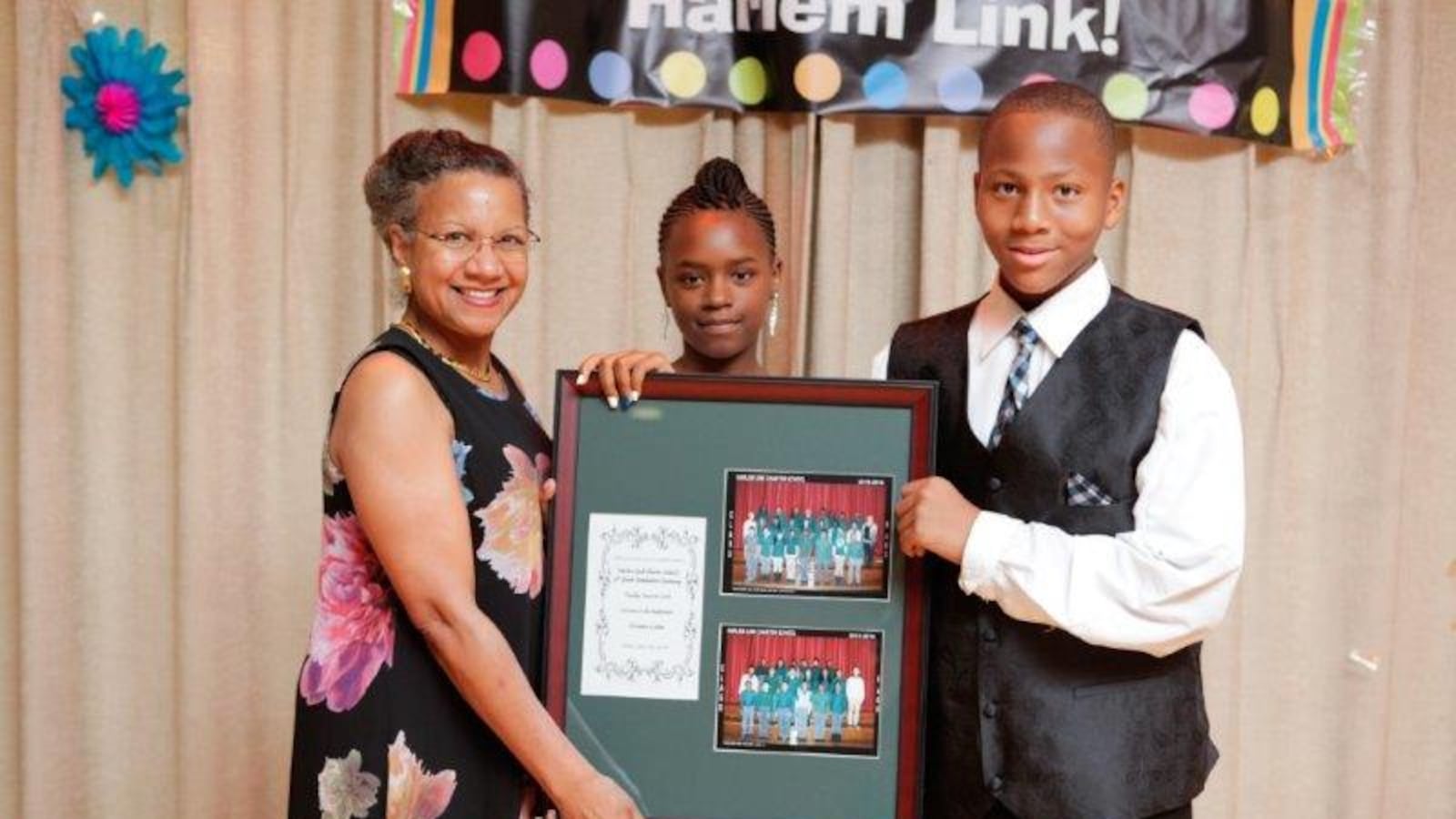Today, we’re launching a new feature called “Close Up.” Send a photo from your school to ny.tips@chalkbeat.org and we’ll respond with a few interview questions, often sharing the answers with our readers. This week, we spoke via email with Steven Evangelista, co-founder of Harlem Link Charter School.
Tell us about this picture.
Ms. Bundles came [to graduation] at the invitation of one of our board members. In her speech, she connected the cultural legacy of the Harlem Renaissance through her family, to the great deeds she expects our graduates to perform in the future. She encouraged them to see Barack Obama, Sonia Sotomayor and Lin-Manuel Miranda as role models who dreamed big and met big goals to improve communities, in concert with our mission goal of active citizenship.
You and your wife, Meg Ryan, co-founded Harlem Link in 2005. Why?
My wife and I were teaching in Harlem district schools and felt that the system was not designed to serve children. We saw charters as an avenue for building a school community that taught “the way we want to teach,” which is based on Bank Street’s methodologies, ways we did not find embraced in Harlem district schools.
Instead of nurturing each child and caring for them like a delicate piece of crystal — something I learned at Bank Street — I found some of the teachers at my school were more interested in making themselves look good, avoiding trouble, and getting out to the suburbs as soon as they could get a “better” job. It was utterly toxic, and even though we are in a charter, we still have to deal with an overly large system that is not aligned for children.
What’s been the biggest challenge thus far?
Leadership is definitely the biggest challenge. After 11 years, I’m still learning and know I’m deficient in a lot of areas. My view is that leadership is an attitude and an action and not a role or sense of authority. People — staff, students — should all feel empowered to be proactive to make their community better, but promulgating that mindset while providing a safe and sound environment is the biggest challenge.
The second biggest challenge is the mismatch of expectations and resources. We work with over 90% of families living in poverty, in the neighborhood with the highest foster-care rate in the city; there is a lot of need for supportive services outside the classroom — not to mention outstanding educators in the classroom, who deserve a high salary — but we only get $14,000 per child for our work.


